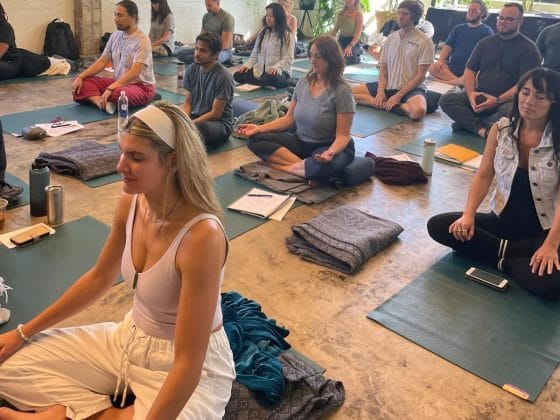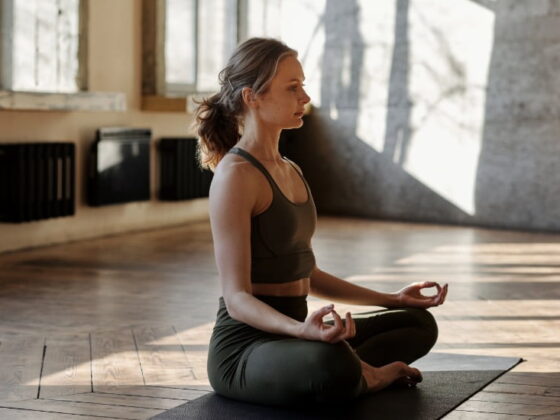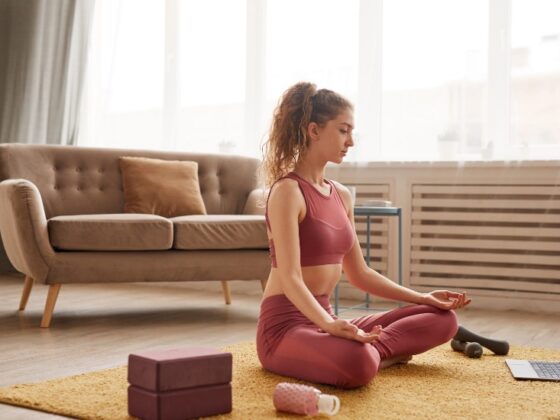Thanks to their multiple benefits, yoga, and similar mindfulness efforts continue to be popular. In the US alone, survey data from the Centers for Disease Control and Prevention (CDC) note that up to one in six Americans actively practices yoga. Of these respondents, around 80% said they practice yoga for their health since it promotes better well-being.
Similarly, the National Center for Complementary and Integrative Health has found that Americans are also more actively adopting other mindfulness initiatives.
For instance, from 2002 to 2022, the number of adults who say they regularly meditate doubled in the US. Specifically, meditation rates went from 7.5% to over 17%.
Aside from their convenience and inclusivity, a large reason why yoga and mindfulness are in demand across diverse demographics is because of their undeniable health perks.
Aside from the more obvious wellness advantages like better mobility and weight management, this includes eye health which happens to be a rising concern. Consider that among adult Americans over the age of 40, over 12 million are estimated to have some degree of vision impairment.
How yoga and mindfulness can enhance vision wellness
The body is a complex machine, and ensuring the entire system works well is key to safeguarding specific organs. This, of course, includes the eyes, which are among the most used and strained in the entire body. Yoga and mindfulness can primarily help vision by helping regulate key aspects of well-being so the mind and body are working in tandem.
For example, yoga has been known to positively stimulate the endocrine system. As such, one benefit of yoga is better sleep patterns. This can aid eye health, being that proper sleep hygiene is a critical time for the ocular region to rest, reset, and flush out toxins.
In some cases, certain yoga practices, can also directly enhance the eyes’s state. Take palming, for example. Since this can involve gently cupping warmed hands over the eyes, it can provide immediate relief. This addresses ocular fatigue that can manifest as blurry vision and improves lubrication, which can prevent dry eyes.
In addition, yoga and mindfulness practices are great at fighting off stress. As our previous article on mindfulness-based stress reduction (MBSR) discussed, they offer a transformative and accessible way to manage triggers.
Over time, this can help develop a heightened sense of awareness that promotes better mental clarity. Regarding ocular health, keeping your stress under control is valuable since it assists in keeping your hormones balanced.
Note that any sort of duress can cause a spike in stress hormones like cortisol. This can cause your interocular pressure to heighten, which can cause issues like blurred vision and even optic nerve damage.
Extra eye care tips for your well-being practices
Of course, just because yoga and mindfulness practices can help your vision doesn’t mean that you don’t have to observe other eye care efforts during your sessions.
To ensure that the benefits your vision receives through your practices are complemented and not just replaced by any new issues, it’s important to adopt protective eye habits. Chief among these is to use the right kind of eyewear. If you already need a prescription, make sure to choose eyeglasses that are lightweight and durable.
This includes models like Eyebuydirect’s Epicenter optical glasses, which have a thin metal frame. Because of the structure, they are less likely to feel heavy even during prolonged practices.
The slimmer silhouette also provides a more seamless field of vision, which may aid you to focus better instead of getting distracted by bulky frames. Wearing the right glasses for your sessions allows you better visual acuity and comfort while ensuring your eye treatment continues as planned.
Aside from prescription specs, you should also consider sun gear, like polarized sunglasses, especially if you like to practice during the day or outdoors. Sun damage to the eyes is no joke, and extended UV exposure can cause problems like corneal sunburns and cancers.
At the very least, the bright sunlight can cause painful light reflections, or glare, that can cause ocular pain and stress. To prevent this, using shades like Oakley’s Unstoppable model can help.
Aside from having lens coatings that can block out radiation and glare, its light frame will not dig in or slip even during more strenuous yoga or mindfulness exertions.
Takeaway
Yoga and mindfulness practices offer more than just mental and physical wellness; they can also be powerful tools for eye health. By promoting better sleep, reducing stress, and even directly relieving eye strain, these practices support eye wellness and help manage vision-related concerns.



